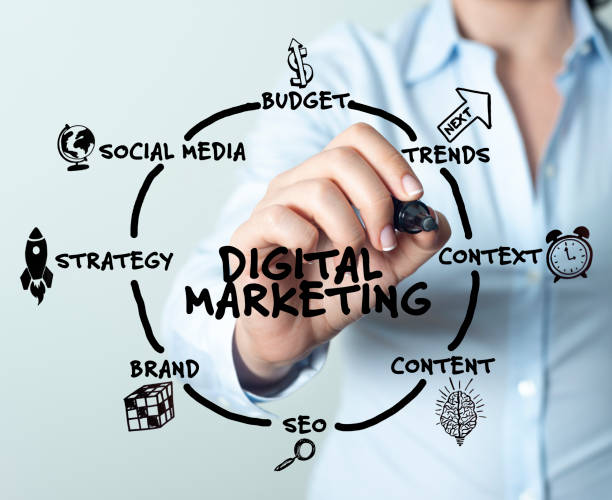As businesses adapt to a rapidly changing marketplace, the choice between digital marketing and traditional marketing is more important than ever. Both methods have their own strengths and weaknesses, and the best approach depends on your target audience, goals, and budget. This article takes a balanced look at the pros and cons of both digital and traditional marketing, helping you determine which strategy is best suited for your business.
1. Marketing Channels
The channels used in digital and traditional marketing are fundamentally different, offering unique advantages.
Digital Marketing: Leverages the internet and digital platforms such as social media, search engines, email, websites, and mobile apps. This makes it highly adaptable and suited for modern, tech-savvy consumers who spend much of their time online. Digital marketing offers the flexibility to run campaigns on platforms like Facebook, Instagram, Google, and YouTube.
Pros:
Wide reach through global platforms.
Ability to target specific demographics and user behaviors.
High flexibility in content formats (e.g., videos, articles, infographics).
Cons:
Highly competitive due to the vast number of businesses online.
Requires constant updating to keep up with algorithm changes and trends.
Traditional Marketing: Relies on offline methods such as TV, radio, newspapers, magazines, billboards, and direct mail. These channels are particularly effective for reaching older demographics or audiences less engaged with digital media.
Pros:
High credibility, especially in established mediums like print and TV.
Suitable for local, broad-reach campaigns (e.g., billboards, TV commercials).
Effective for building brand awareness among diverse audiences.
Cons:
Less targeted and harder to measure audience engagement.
Higher costs for production and distribution.
2. Audience Targeting
How you reach and target your audience is one of the key factors when comparing digital and traditional marketing.
Digital Marketing: Allows for highly precise targeting based on demographics, location, interests, and online behavior. Platforms like Google Ads and social media networks offer detailed options for reaching the exact type of customer you want.
Pros:
Ability to tailor ads based on specific interests, behaviors, and locations.
Efficient use of budget by focusing on likely-to-convert customers.
Real-time adjustments to optimize performance.
Cons:
Requires access to accurate data and analysis tools.
Can be difficult to stand out in oversaturated digital spaces.
Traditional Marketing: Primarily uses broad targeting, making it more difficult to reach a specific audience. For example, a TV ad reaches anyone who watches that channel, regardless of their relevance to the product.
Pros:
Broad audience reach, which can help build brand awareness.
Works well for businesses targeting a general or older audience.
Cons:
Less control over who sees your message, leading to potential waste in ad spend.
Limited ability to track who engaged with the advertisement.
3. Interaction with Audience
The ability to engage with your audience directly impacts how effective your marketing is.
Digital Marketing: Facilitates two-way communication, where consumers can engage with brands through social media, comments, likes, and shares. Brands can respond instantly, providing a more interactive experience.
Pros:
Immediate feedback from consumers, allowing for quick adjustments.
Encourages engagement, which can lead to viral marketing and word-of-mouth.
Cons:
Negative feedback can spread quickly and harm brand reputation.
Requires constant monitoring and interaction, which can be time-consuming.
Traditional Marketing: Is typically a one-way communication method. Consumers receive the message (e.g., from TV, print, or radio) but cannot instantly engage with it.
Pros:
Easier to control the narrative without immediate public feedback.
Stable message delivery that is less vulnerable to online backlash.
Cons:
Lack of engagement limits interaction and customer relationship building.
Feedback is often delayed and harder to gather.
4. Cost and Budget Flexibility
Cost is often a significant deciding factor when choosing between digital and traditional marketing.
Digital Marketing: Is known for being cost-effective and budget-friendly, especially for smaller businesses. Campaigns can be scaled based on available resources, and marketers can spend as much or as little as needed.
Pros:
Highly flexible budget options.
Pay-per-click (PPC) models allow for performance-based spending.
Cost-effective for startups or small businesses.
Cons:
Lower costs can lead to oversaturation and fierce competition.
Can require a long-term commitment to see significant results.
Traditional Marketing: Often requires a higher upfront investment, especially for premium channels like TV and radio. Printing, production, and distribution costs can be substantial.
Pros:
High visibility and impact, particularly with TV or prime-time ads.
Can provide strong brand positioning in mass media.
Cons:
Higher costs, especially for broad-reach campaigns.
Less budget flexibility and limited control over how ads perform.
5. Measurability and Analytics
Being able to measure the success of a marketing campaign is critical to its optimization and effectiveness.
Digital Marketing: Offers detailed analytics and tracking tools that measure campaign performance in real-time. Metrics like click-through rates (CTR), conversion rates, and website traffic are available through tools such as Google Analytics, allowing marketers to adjust their strategies immediately.
Pros:
Precise data tracking enables continual optimization.
Easy to measure ROI and effectiveness.
Immediate insights into customer behavior and preferences.
Cons:
Requires a good understanding of data analytics and metrics.
Data overload can make it difficult to interpret meaningful insights.
Traditional Marketing: Lacks the same level of measurability. Tracking the effectiveness of a billboard or radio ad can be challenging and often relies on estimates or surveys.
Pros:
Certain channels, like print, provide brand prestige and can be seen as more trustworthy.
Cons:
Difficult to gauge the direct impact of a campaign.
Delayed feedback and lack of precise performance data.
6. Flexibility and Adaptability
How quickly a campaign can be adjusted in response to performance or market changes is another key distinction.
Digital Marketing: Offers a high degree of flexibility. Campaigns can be paused, modified, or completely restructured in real-time based on performance data.
Pros:
Instantaneous changes based on consumer feedback or performance.
Greater control over ad content and timing.
Cons:
Requires constant monitoring to ensure campaigns remain effective.
Traditional Marketing: Is less adaptable. Once a traditional ad is published or aired, it is difficult to change.
Pros:
More consistent in terms of messaging without frequent interruptions.
Cons:
Limited ability to make adjustments once a campaign is launched.

Conclusion
Both digital marketing and traditional marketing have their own distinct advantages and disadvantages.
Digital marketing excels in audience targeting, cost-efficiency, real-time adaptability, and measurability, making it ideal for businesses looking to engage with modern, tech-savvy consumers. However, it requires constant monitoring and a well-thought-out strategy to stand out in an oversaturated digital landscape.
On the other hand, traditional marketing remains valuable for building brand awareness, reaching broad audiences, and maintaining a strong presence in established mediums like TV and print. It may be less targeted and harder to measure but is still a powerful tool for certain demographics and high-impact campaigns.
Ultimately, the most effective marketing strategy often combines elements of both approaches, leveraging the strengths of each to create a well-rounded and comprehensive marketing plan.

